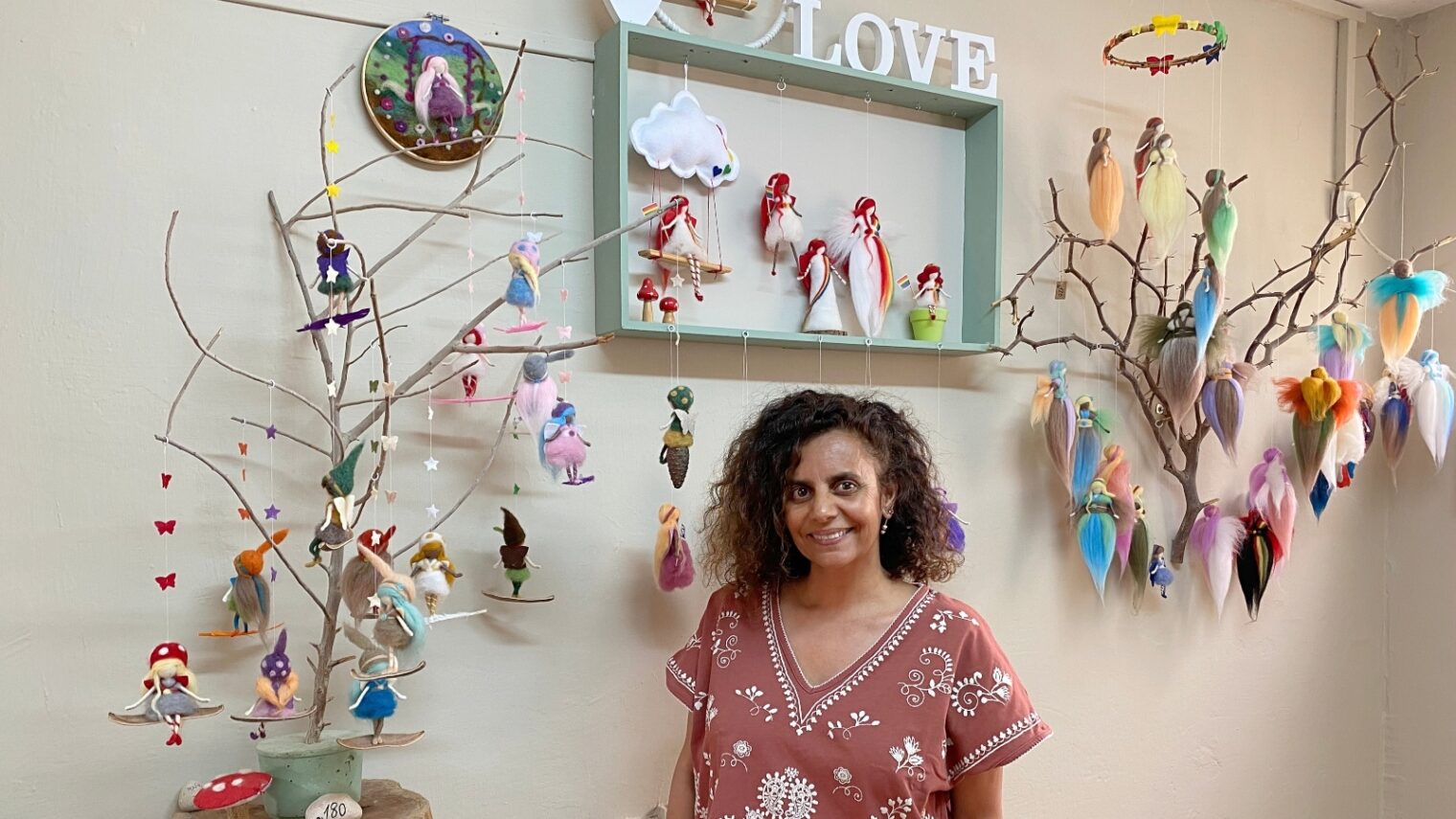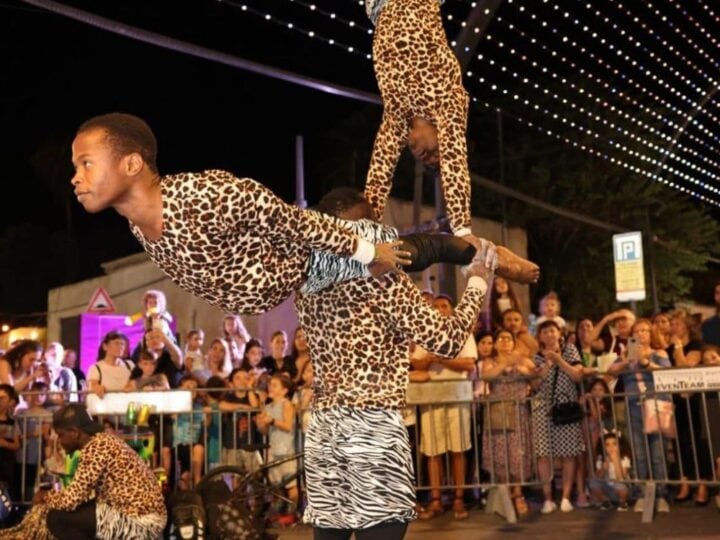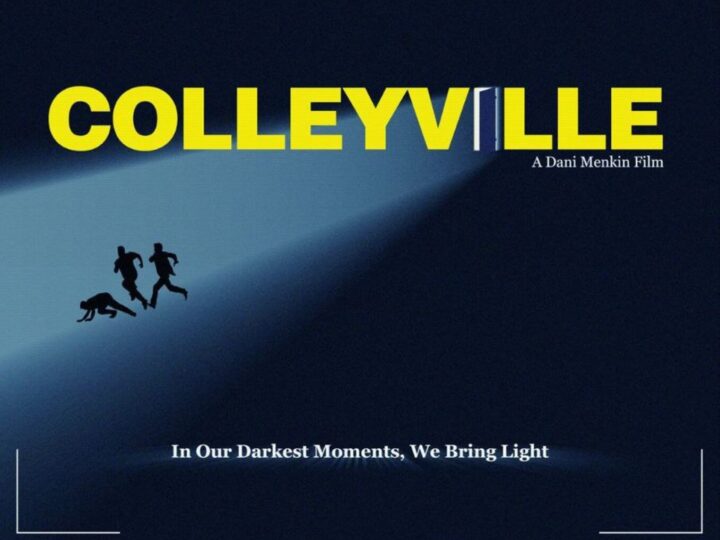“Forty years ago, this was an army camp,” says Ilanit Bronstein, one of 15 talented members of the Vidor Artist Colony in Zuqim, a small town in Israel’s Arava region south of the Dead Sea.
She knocks on the wall of her TelePele studio to demonstrate the solid construction of the former military installation.
“When Zuqim was established [in 2001], they didn’t know what to do with this complex. It’s hard to break because it’s thick concrete. So instead of destroying it, they made it into an artist village about 15 years ago.”
Today, Vidor is a charming creative oasis in a region famed for its advanced desert agriculture.
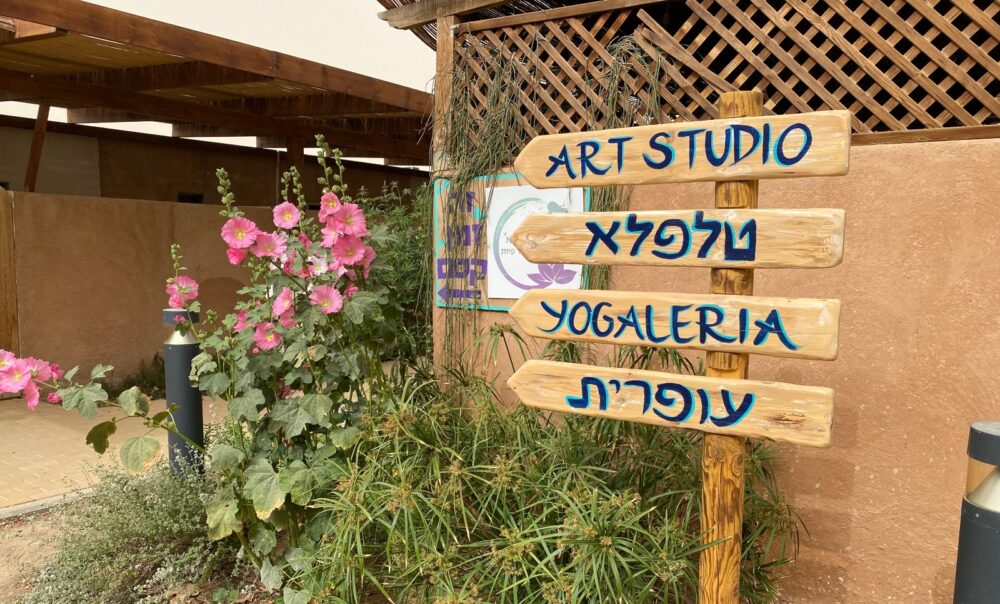
The Vidor family name also graces the visitor center of an agricultural R&D center in Hazeva, not far from Zuqim. Many initiatives in this region are beneficiaries of government and nonprofit organizations including Jewish National Fund-USA and JNF-Australia, to provide employment and tourism opportunities in the Arava.
“I worked in fashion,” Bronstein tells ISRAEL21c, “and when I arrived to the Arava 10 years ago there was no fashion, so I started working in the kindergarten of the Arava Waldorf School. That’s where I became familiar with art made from sheep wool.”
Bronstein uses a dry felting technique (“The oldest form of textile work,” she says) to handcraft soft fairies symbolizing themes such as dreams, self-awareness, peace and love.
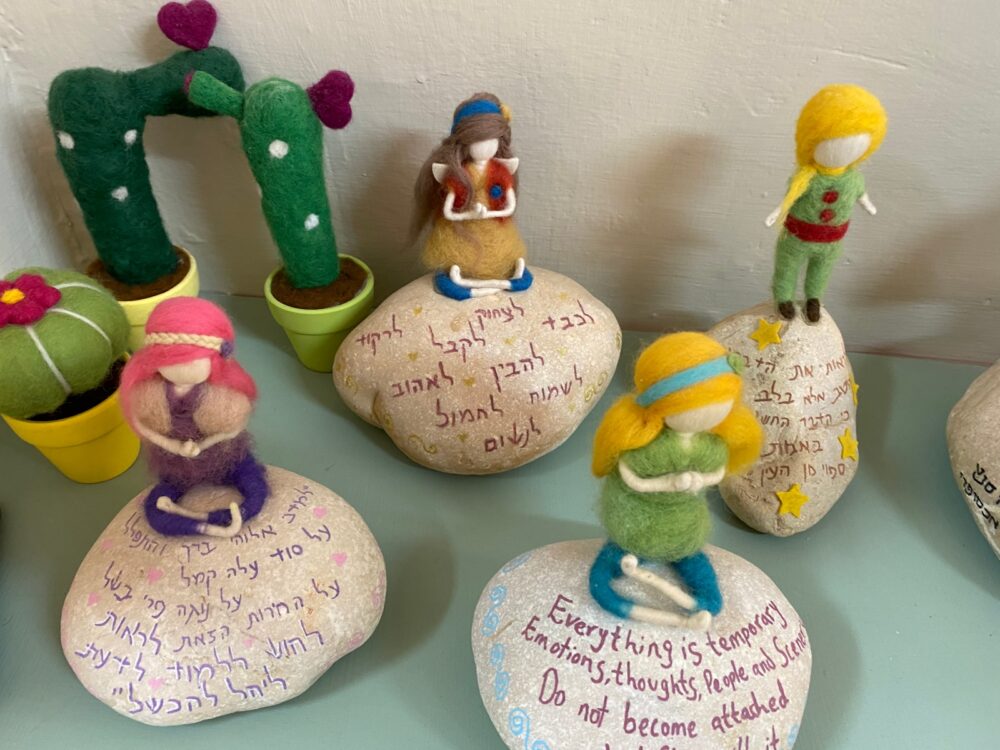
“To me, fairies represent joyful energy, faith and gratitude,” Bronstein says. “Anyone who seeks joy and harmony in their lives can connect to the unique magic associated with fairies.”
She also uses wet felting to make sturdy items for home décor and accessories. Visitors can partake in wet felting workshops at TelePele and take home a purse, bowl or wall hanging.
Nature is the greatest artist
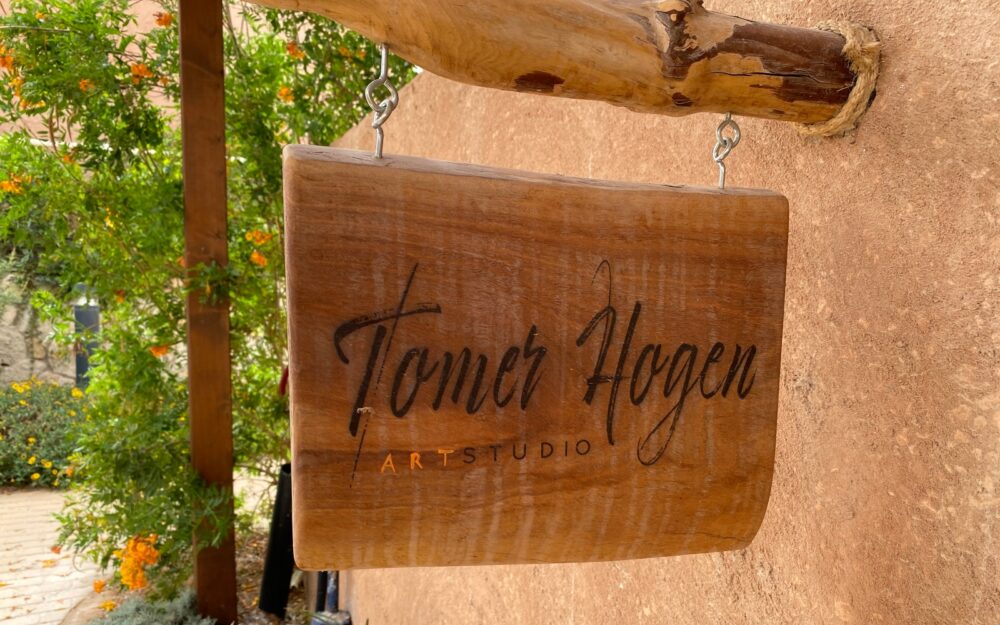
All the artists in the colony offer products and workshops in their areas of specialty, which include wood, iron, concrete, clay, stone, photography, painting, natural cosmetics, jewelry and more.
The studio of architect Tomer Hogen contains the lathe and other tools he uses to sculpt with raw wood, driftwood, local stone and metals.
“Nature is the greatest artist of all; my art involves choosing how to present it,” he says.
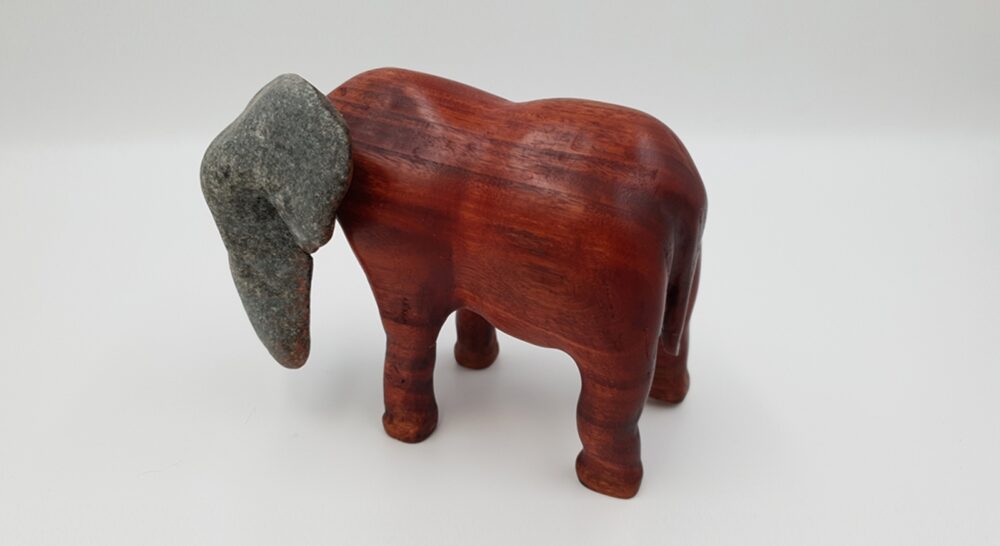
In the studio of musician Danny Tal, visitors can experiment with (and purchase) instruments such as kalimbas and maracas made from natural materials.
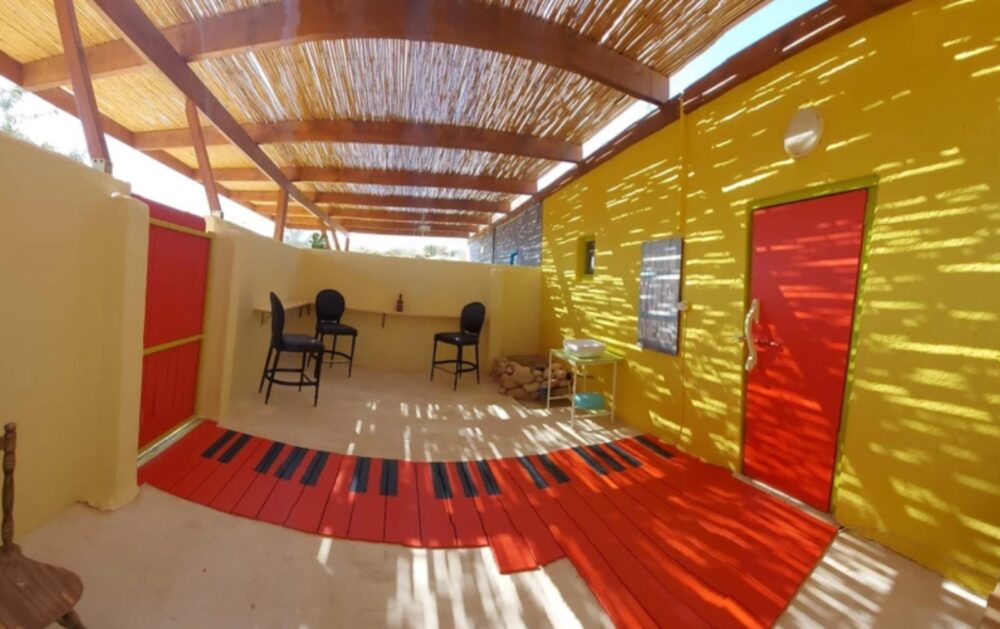
Nehama Harach, a graduate of the renowned Bezalel School of Arts in Jerusalem, leads “desert pottery” workshops for up to six participants.
“Creating with clay is very meditative,” she says. “For me clay is a pleasant, sensual and healing substance, allowing my imagination to run wild and endlessly create.’’
View this post on Instagram
Toshan developed his creative techniques in Thailand and India, using locally sourced stones, rocks, branches and fossilized roots to fashion wind chimes, bags and jewelry among other items.
Andre Gunter, a certified gardening therapist, herbalist and former pharmacist, sculpts animals from stone, metal, driftwood, old machine parts and tools.
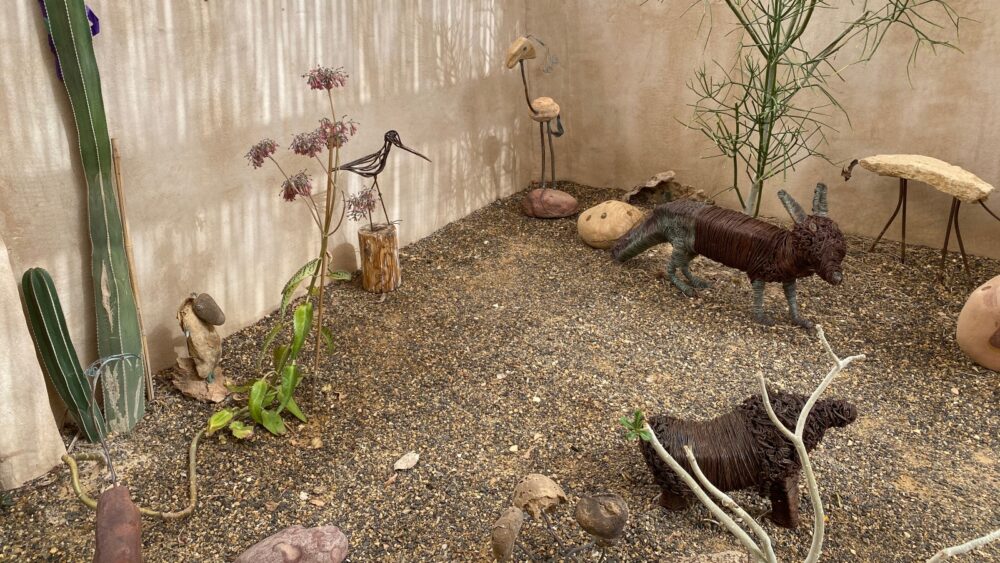
Tinker, who won the Ophir Award (Israel’s Academy Awards) for Best Actress in 2000 and cofounded an international film festival in the Arava, also has an art studio in the colony.
View this post on Instagram
On the day we visited, Tinker’s female body-centric exhibition, “Vulvanerable,” was featured in the Vidor center’s Ashosh Desert Gallery adjacent to the dairy Gallery Café. The village also offers a yoga studio, therapeutic treatments, coffee shop, health food store and overnight lodging.
There’s plenty to explore at the Vidor Artist Colony, open Fridays and Jewish holiday eves from 10am to 3pm.




